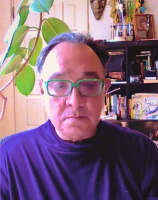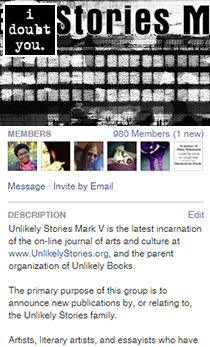Two Perspectives on Black Resistance in America
Jazz and Naturalism
When scientists at Los Alamos National Labs initiated the first atomic explosion on the high desert alluvial plains of La Jornada del Muerto in southern New Mexico on July 16, 1945, they both insured the victory of the allied armies over the forces of fascism and ushered in the Postmodern age with a fiery symbol of its potential for potent cultural change, and for chaos as well. The time period between 1945 and 1952 saw increased and organized resistance by Black culture in the American milieu: this often came in the form of art and literature, where a new sense of naturalism provided historical context, the affirmation of unique identity and an authentic interest in Black cultural forms, activities and artifacts.
This was a celebratory time for American culture, unless you happened to be Black. As viewers saw in Ken Burn’s documentary Jazz, musician Dave Brubeck recalls the return of his military outfit, his band, to their home base in Texas. Instead of conquering heroes, the Black men in the unit were told they couldn’t be served in the mess hall and had to wait by the kitchen door to be doled out their rations, which were to be eaten in a place that was separate from the mess hall. This caused one of his men to cry out in terror and rage, for hadn’t they all just survived a perilous, years-long course to save America from the real barbarians?
In his essay “Writing the American Story”, which appears as chapter 16 in The Cambridge History of African American Literature, John Lowe, a professor known for his work in comparative literature, talks about this cultural situation while referencing Richard Wright’s seminal novel of Black empowerment, Black Boy, noting “the rage that motivated African Americans in the days after the Second World War, a conflict that they had helped win, in terms of both the heroism of black servicemen and the stateside employment of black workers in war factories.”(Lowe, 341).
This anger, Lowe reasons, was transmuted into action, into resistance, into art, into literature: “Veterans who had been welcomed abroad as liberating heroes were unwilling to return to submissive places in American society, which meant back seats on buses, restrictive covenants that kept blacks out of white neighborhoods, segregated and inferior schools, and voting restrictions in Southern states. While many African Americans therefore continued the “Great Migration” to Northern cities after the war, those remaining or returning to the South increasingly began to join resistance organizations…” (Lowe, 341).
Before I proceed, think that it’s important to reference the notes of French Marxist scholar Guy Debord who said this about resistance: “The fusion of knowledge and action must be effected within the historical struggle itself, in such a way that each of these poles depends for its validation on the other.” (Debord, 59).
In the case of the nascent Black resistance that developed as a result of World War II, as a result of America’s entrada into Postmodernism, the knowledge, both historical and contemporary, revealed to Black soldiers in Europe was transformed within a few years from a simmering anger into proactive political action that included, “the powerful influence of the Brotherhood of Sleeping Car Porters and the Congress of Racial Equality (founded 1942), the redefinition of the long-existing National Association for the Advancement of Colored People, and, perhaps most importantly, the creation in 1957 of the Southern Christian Leadership Council. The new spirit of militancy was stoked by black newspapers such as the Pittsburgh Courier, the Chicago Defender, the Baltimore Afro-American, and the Norfolk Journal and Guide, and was encouraged by the work of radical white scholars such as Gunnar Myrdal, whose 1942 classic An American Dilemma: The Negro Problem and Modern Democracy mounted a revised and extended version of Du Bois’s assertion that the color line was the central problem for twentieth-century America.” (Lowe, 342).
The movement forward also manifested itself as literature. This phenomenal cultural output, epitomized by Wright’s novel, did not rise without precedence, and in fact has its roots in the pre-War, Federal Writing Project, where many colonized Black journalists and writers were hired to record ethnographies of their people. The influence of this detailed style of journalistic writing led to the development of naturalism in the writing of Richard Wright and his peers. Such works were interested in Black culture itself (read: music, religion, popular culture) rather than in exploring the conflict with White cultural norms. As this period of naturalistic depictions thrived, it evolved to encompass themes of resistance as well, as noted by Lowe, who writes, “Ellison’s Invisible Man (1952), the other monumental bookend to this period, would mount a narrative that united these seemingly divided streams of African American expression.” (Lowe, 342).
Besides developing a literature of resistance, Black Americans also had to deal with the overarching cultural phenomenon of postmodernism, symbolized and made real by the advent of the atomic age and the cold war between America and the USSR that followed. Continued economic isolation and outrage about the Jewish Holocaust at the hands of the fascists added to the sense of dread felt by Black Americans, postwar. The global outcry against the Holocaust brought attention to the continued oppression of people of color in the United States, and so the struggle grew political and moral wings, as Lowe relates, “As Ellison put it, it was time for blacks to become “the conscience of the United States.” From the rubble of the global conflict, the newly powerful nation needed “a new humanism” as it confronted its hold on “the destructive–creative potential of atomic power.”
Richard Wright’s naturalism in Black Boy makes for engaging reading that informs, entrances, and shocks. The novel is reminiscent of Joyce’s style and intent in Portrait of the Artist as a Young Man, in that it chronicles the story of a young artist as he struggles with himself, his culture and others to define his identity and his place within his culture and the world. Like Joyce’s novel, it’s naturalistic in its attention to detail, especially to the protagonist’s environment and interactions with the people he encounters in his life. Though poetically descriptive and filled with nuanced depictions of nature (e.g., scents, landscapes, animals, and the weather) (Lowe, 343) there is a certain detachment in the story told by Wright, as if he is standing in the background, watching it all unfold, describing it all as a prelude to who and where he is now. This gives the work historical and existential context, as Lowe notes: “The long litany of persecutions that Richard endures shows the book’s affinities with the slave narrative, as does the book’s ending, when the hero seemingly ‘escapes’ the oppressive South for a progressive North, like slave narrators before him. Richard’s dogged pursuit of an education against forbidding odds closely aligns him with Frederick Douglass, and is proleptive of Malcolm X; like them he learns words can be weapons, as in the inspiring passages he reads from the acidic journalist/philosopher/gadfly H. L. Mencken.”
The trend towards naturalism in post-war Black literature continued and evolved, culminating in Ralph Ellison’s novel, Invisible Man, in 1952. But during those years, there were many other intense and “hard bitten” (Lowe, 345) visions of Black American created by Black American naturalists who focused on urban (read: non-pastoral) and sometimes prison settings to reveal tales that ultimately called for racial justice, including literary notables like “(Chester) Himes, Lloyd Brown (1901–2007), Willard Motley (1909–65), Ann Petry, and William Gardner Smith” who are “sometimes grouped as members of the ‘Wright School’ as their brand of black naturalism was inspired by Native Son.” (Wright 344). Key works here include Chancellor Williams’s Have You Been to the River? which features deep religious overtones, as well as a novel by Anne Perry, The Street — “a somber, distressing, and powerful story about a black single parent trying to make a home for her son in the slums of Harlem after her husband betrays her” (Lowe, 346). Each contribute to the movement toward naturalism. Further, Lowe believes that Perry’s work “forms a feminine and naturalistic pendant to Native Son, rather like the complementarity of the narratives by Frederick Douglass and Harriet Jacobs in the preceding century.”
As for the resulting emphasis on literary naturalism, Lowe concludes, “This new mode of seeing, reading, and perceiving, filtered through a folk-influenced blues aesthetic, also enables the reader to read, as he did, through the newly focused lens of history. In a famous review of Native Son, Ellison noted that Southern blacks in Wright’s work live in a ‘pre-individual state induced artificially, like the regression to primitive states noted among cultured inmates of Nazi prisons.’ But he also felt writing emerged from culture, especially music. As he famously remarked, Wright in Black Boy evinced a ‘blues impulse’ using it ‘to keep the painful details and episodes of a brutal experience alive in one’s aching consciousness, to finger its jagged grain, and to transcend it, not by the consolation of philosophy but by squeezing from it a near-tragic, near-comic lyricism.’ To their credit, most of the writers between 1945 and 1952 ‘squeezed’ great writing from often tragic but sometimes joyous experience, powerfully assisting the postwar birth of a new age of national expression.” (Lowe, 355).
In this case, naturalism can be seen as a cultural/literary response to an atomic-powered western world where black lives, heroic in the defense of the nation, still faced oppression, economic isolation and brutality in an ascendant west. Naturalism offers a distinctly detached yet intimate view of the lives and histories of a vibrant, struggling, evolving culture; as such it is a near-perfect weapon of resistance. This is a lesson that we can use today to inform our current resistance activities. As Debord reminds students of revolution, “revolution demands that workers become dialecticians, and inscribe their thought upon practice.” (Debord, 89).
Upon reflection, the developments of jazz in American music during the pre-war era, particularly during the Harlem Renaissance and naturalism as a potent literary device in the post-war literature of Black Americans shaped the voice and direction of resistance to the hegemonic White patriarchy. Both mediums provided a means to establish an unique cultural identity for Black people, and more importantly established a counter-narrative to those advanced by privileged, complicit status quo. As American culture moved through postmodernism, toward the cultural tumult of the 1960s, these two cultural artifacts would prove to be efficacious weapons in the continuing battle for civil rights and freedom for all Americans.
Works Cited
Debord, Guy. The Society of the Spectacle. Translated by David Nicholson-Smith. Zone Books. (New York: 1995).
Jazz. Directed by Ken Burns. Performances by various jazz musicians including Louis Armstrong, Dave Brubeck, Dizzie Gillespie and Charlie Parker. PBS, 2001.
Judge, Mark Gavreau. “Ken Burns Ain’t Got That Swing”, in the Claremont Review of Books, Vol. 1, Number 2. Winter 2001. https://claremontreviewofbooks.com/ken-burns-aint-got-that-swing/. Accessed December 25, 2023.
Locke, Alain. “Enter the New Negro”, in Survey Graphic. March 1925.
Lowe, John. “Writing the American Story, 1945—1952”, in The Cambridge History of African American Literature. Edited by Maryemma Graham and Jerry W. Ward, Jr. http://universitypublishingonline.org/cambridge/histories/. Accessed January 10, 2024.
Schuyler, George S. “The Negro Art-Hokum”, in Nation, Vol. 122. June 16, 1926. Pages 662-33.
Pages

Rudolfo Carrillo is a writer/artist living in Albuquerque, New Mexico. Carrillo holds a BFA from the University of New Mexico and is currently a graduate student in the UNM English Department. His art work has appeared at 6o6 Gallery, Raw Space, and the ASA Gallery; his literary work has been featured in Typo Mag, On Barcelona, and Maverick Magazine; his work as a journalist has appeared in many regional publications. Carrillo was the news/music editor at Weekly Alibi – where he wrote as August March. Rudolfo recommends the New Mexico Black Leadership Council.


